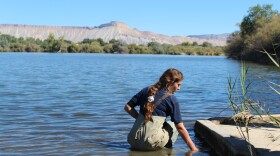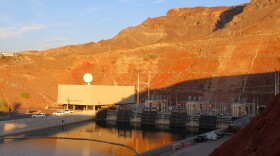-
To limit damage Colorado Parks and Wildlife has been increasing its efforts to detect the bivalve since it was first discovered in the state in 2022.
-
The Utah Supreme Court said a private company failed to show the water would be put to “beneficial use.”
-
Ted Cooke had been tapped to run the Bureau of Reclamation, but withdrew as some Upper Basin states worried about potential bias.
-
Colorado water officials this week (September 5th) will weigh in on whether a pair of Colorado River power rights can be used to benefit the environment. Allowing the state to use Shoshone’s water rights could save fish and improve the aquatic environment in the watershed. The Colorado Sun's Shannon Mullane discussed the topic with KUNC's Desmond O'Boyle
-
KUNC's Alex Hager rode nearly 50 miles on the Poudre River trail and learned about the wildlife, people and farms that use its water along the way.
-
A new approach to addressing water scarcity is underway — one that turns farmland into projects that benefit both people and the environment. Researchers say parched Mountain West states could learn from it.
-
Idaho's two Republican senators are signing on to a bipartisan bill that would triple the budget of a program to clean up water sources in national forests.
-
A better understanding of groundwater in the headwaters could improve streamflow predictions.
-
One Colorado city's drinking water got the highest score from judges, who said it tasted smooth and light.
-
Zebra mussel larvae were recently detected in the Colorado River. What does that mean for the 40 million people who depend on the river for drinking water and agriculture in Western states? And what can the state do about it?

Play Live Radio
Next Up:
0:00
0:00
Available On Air Stations










